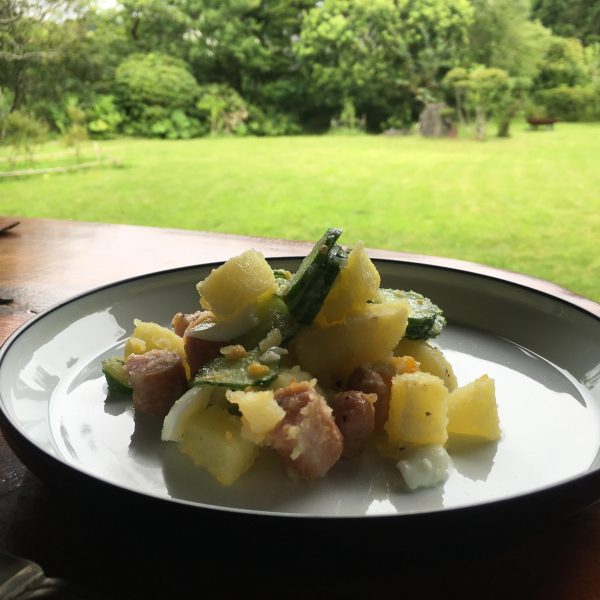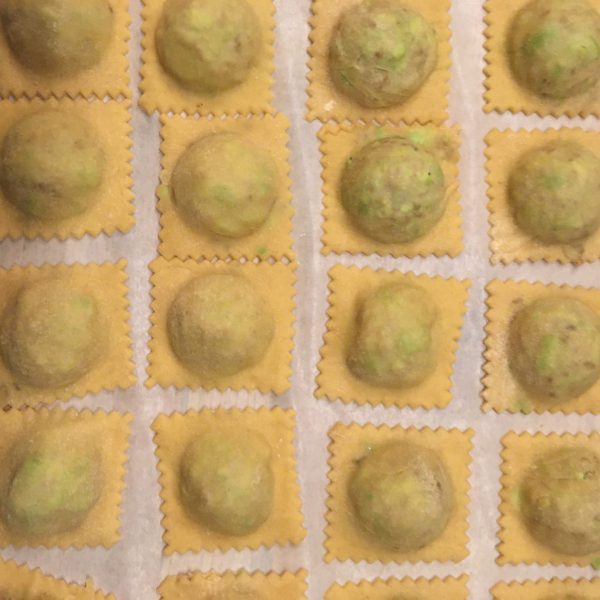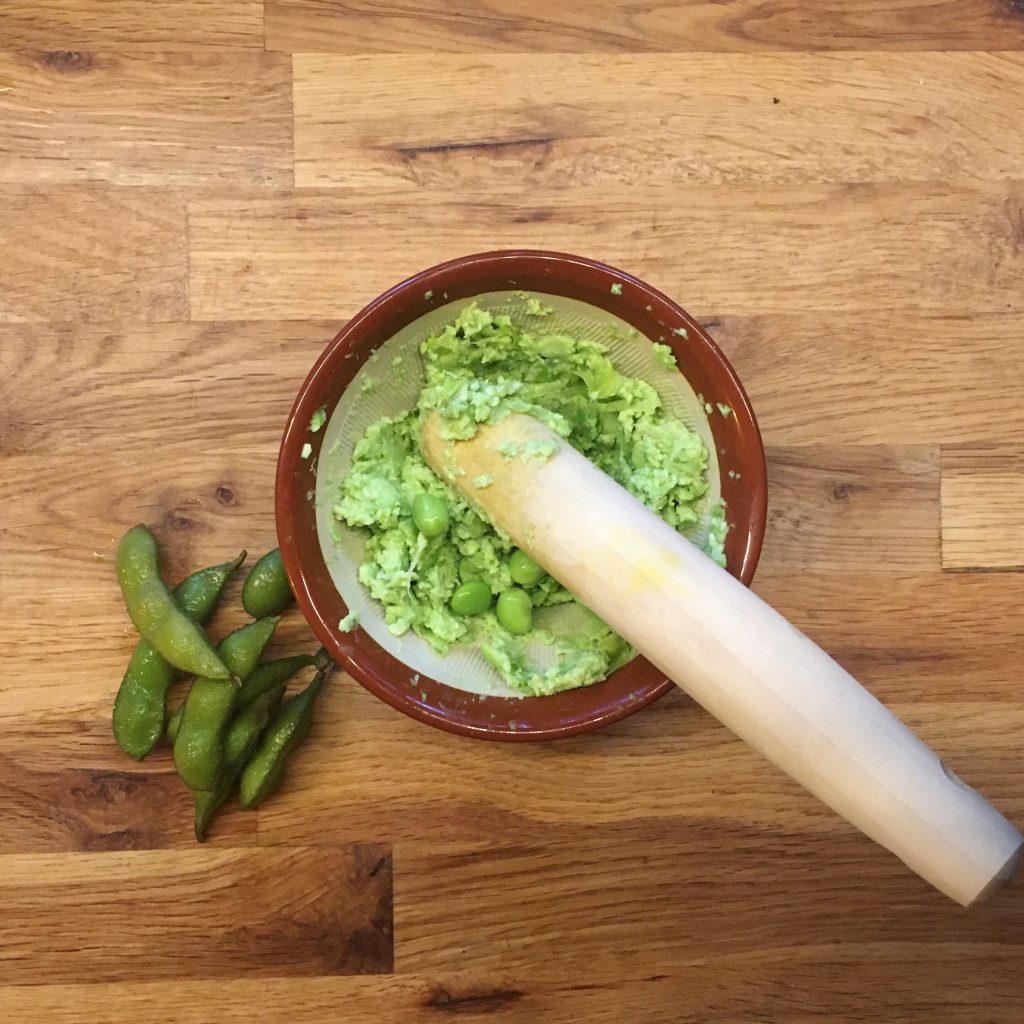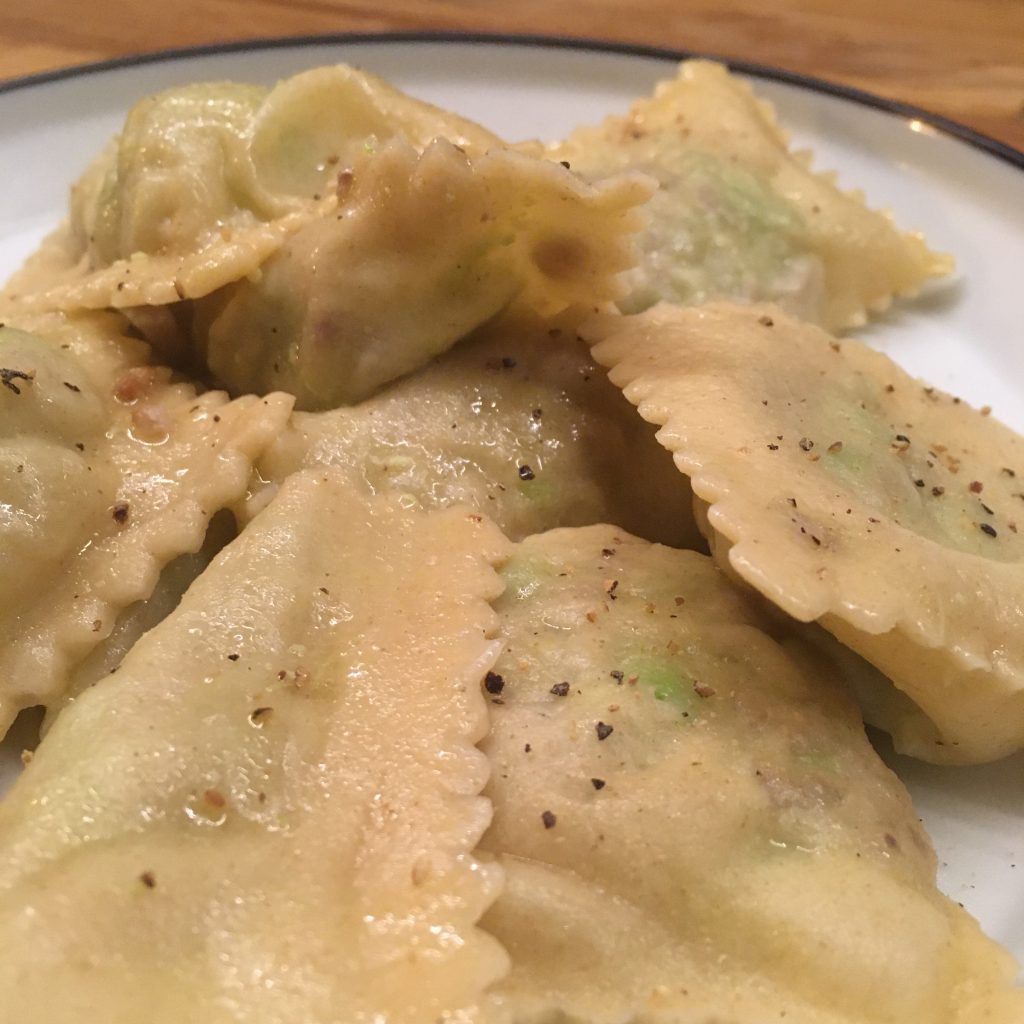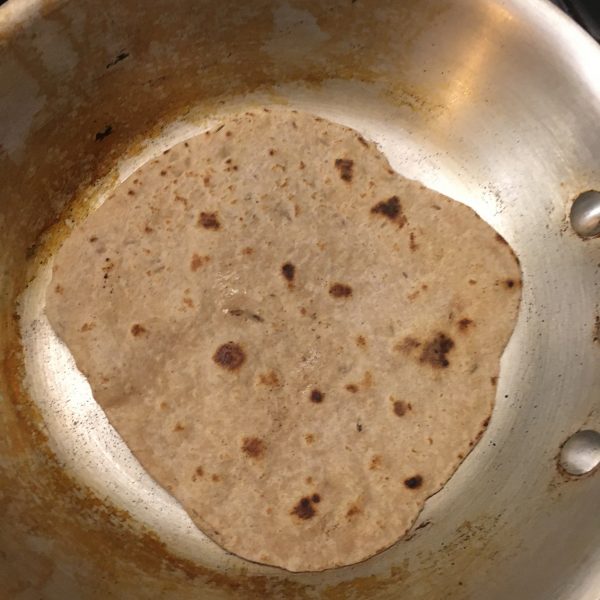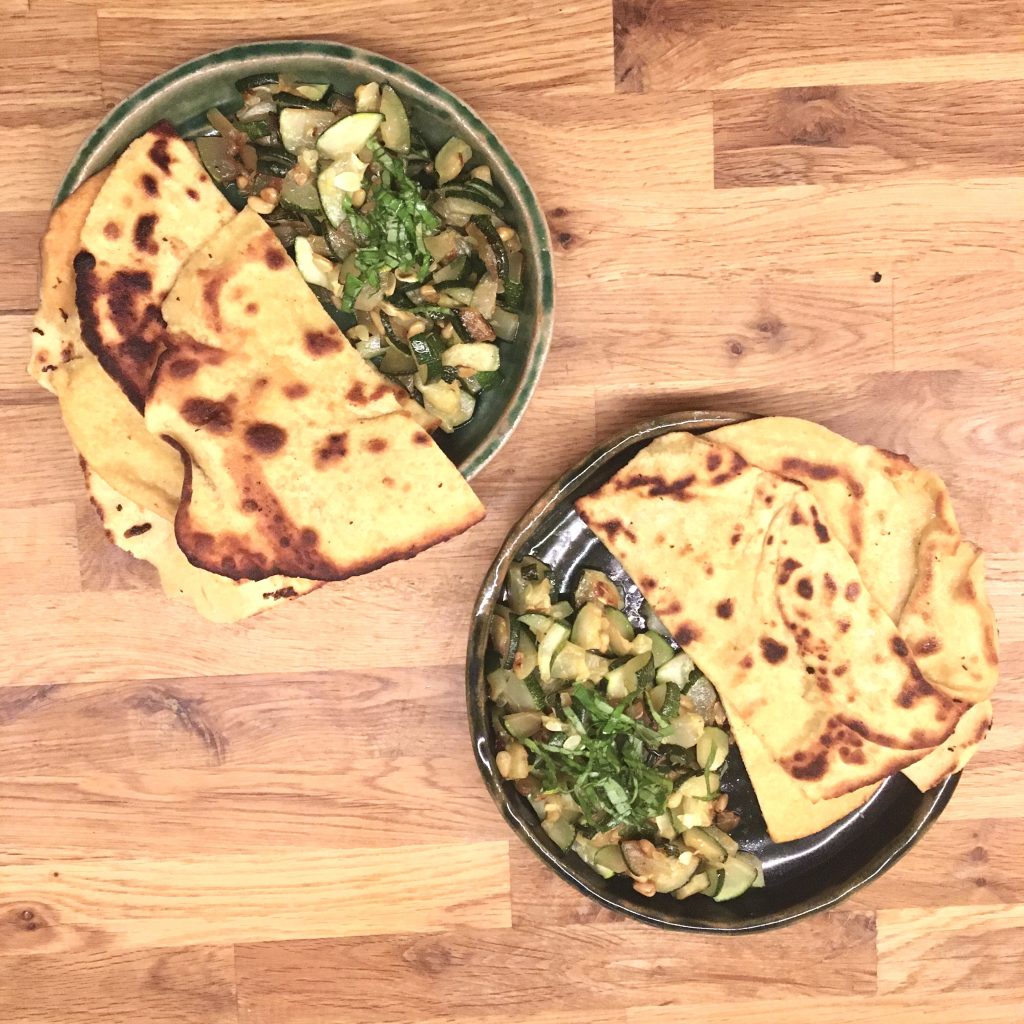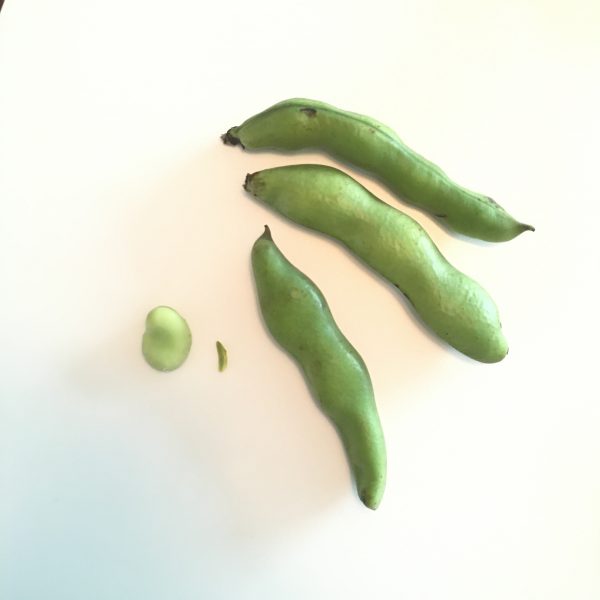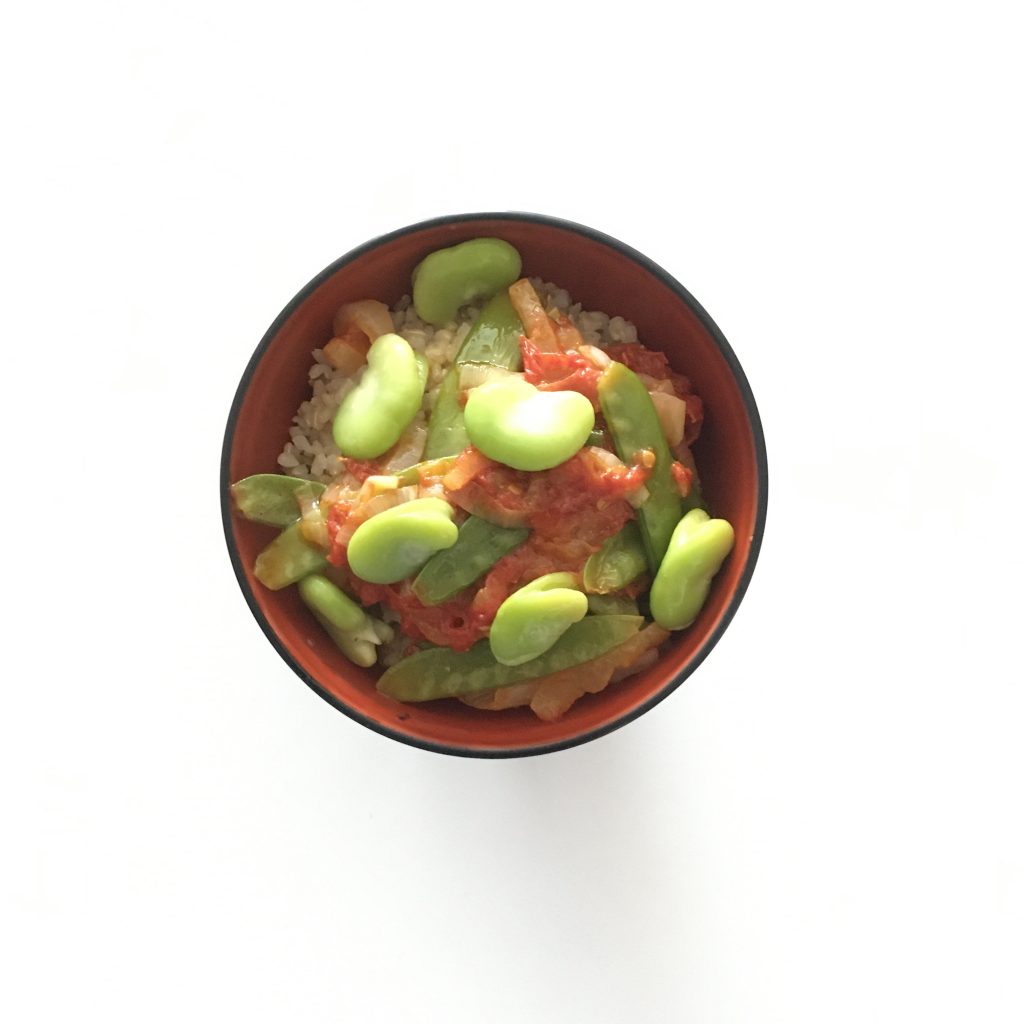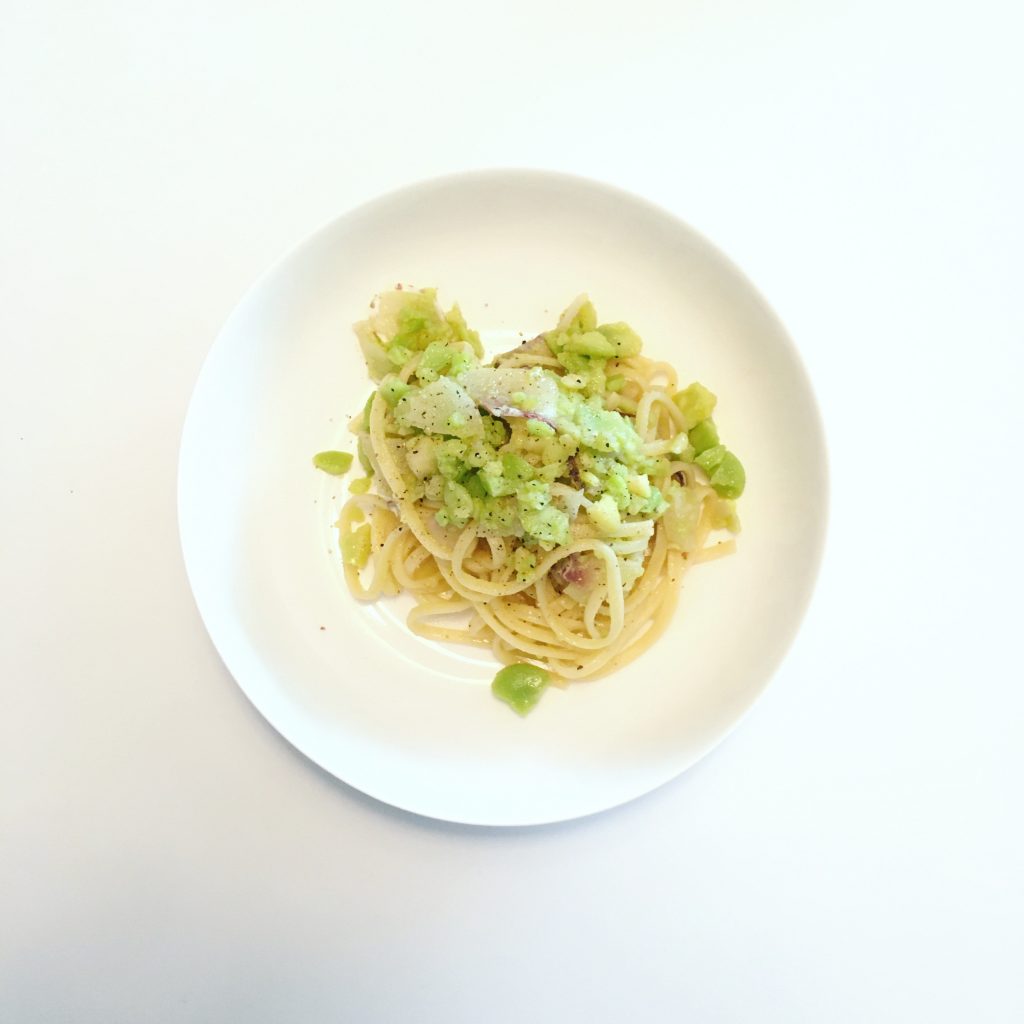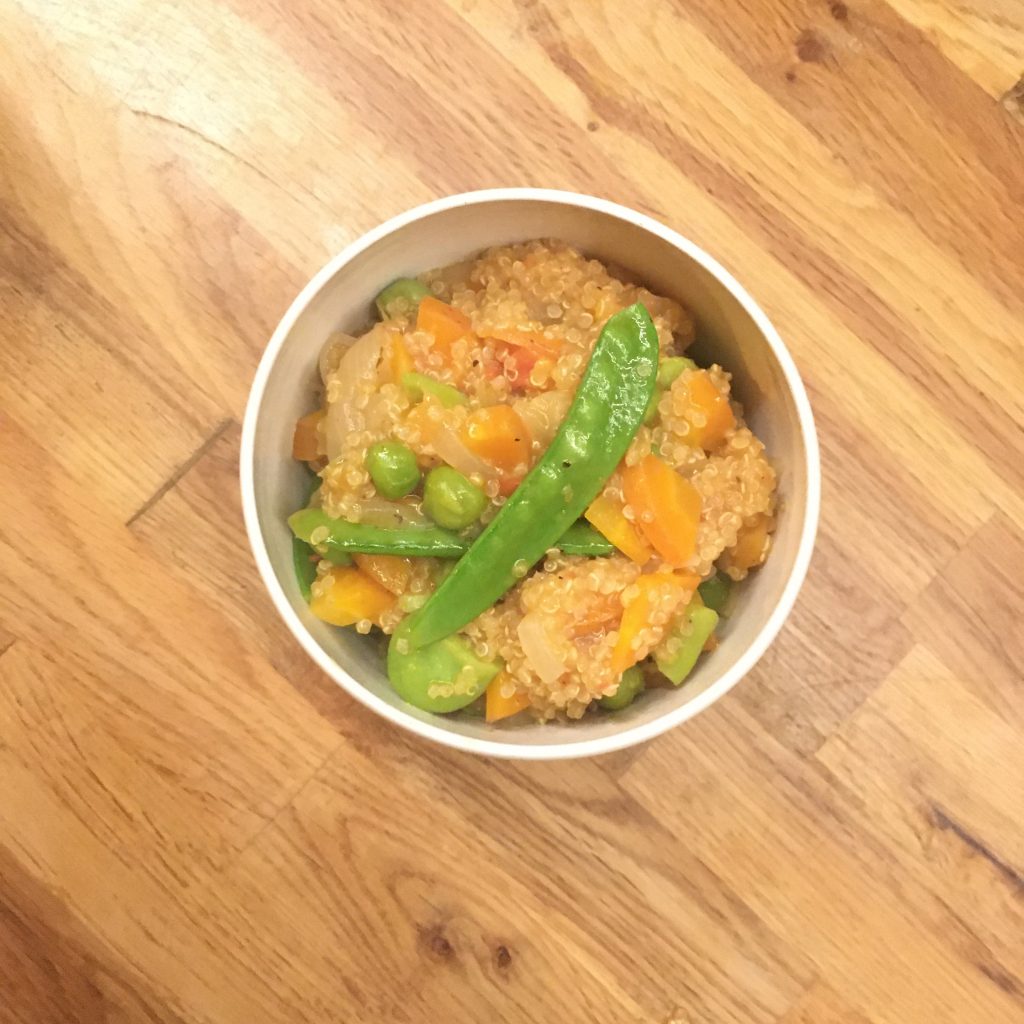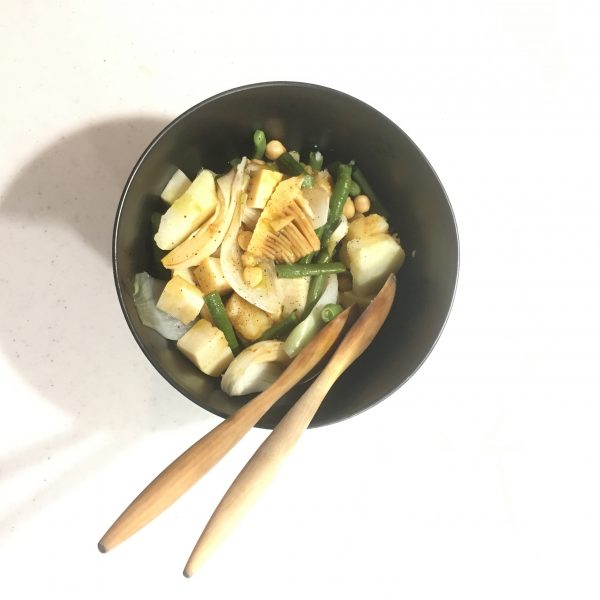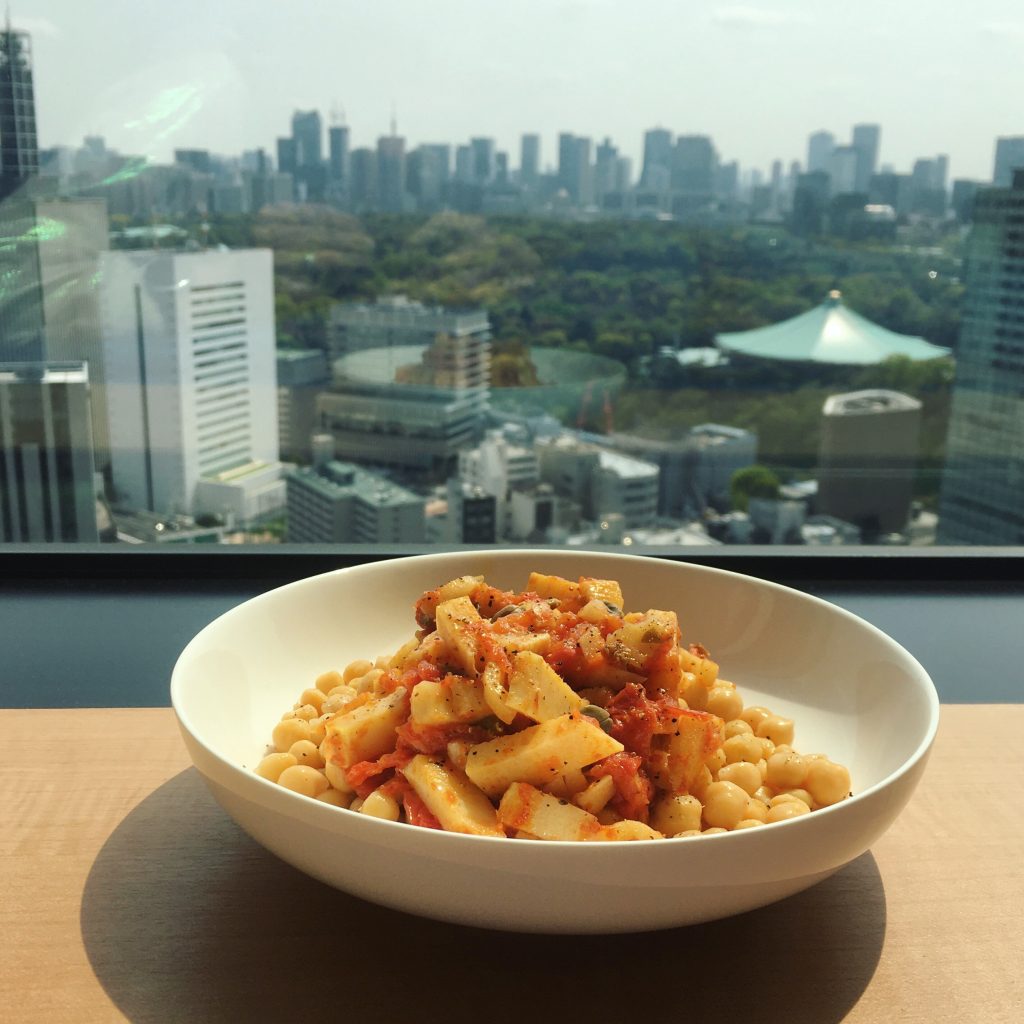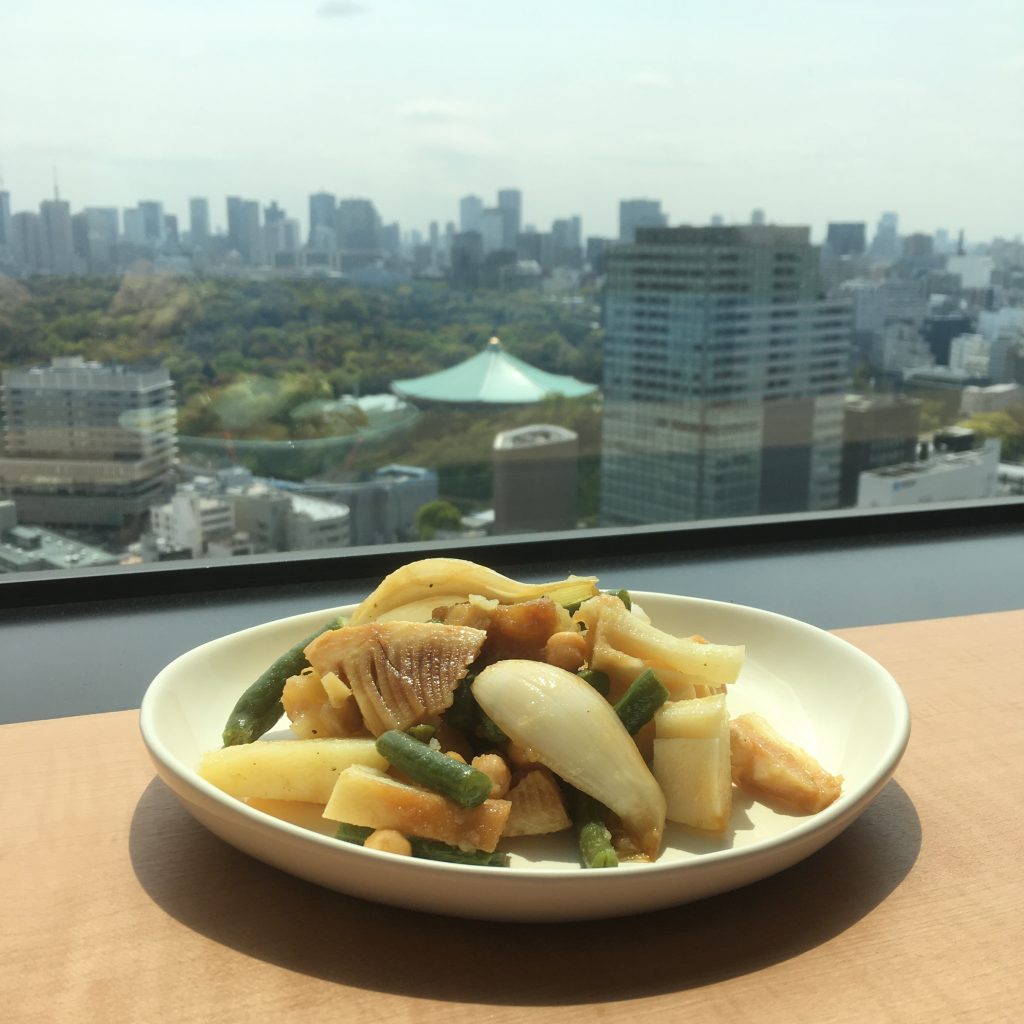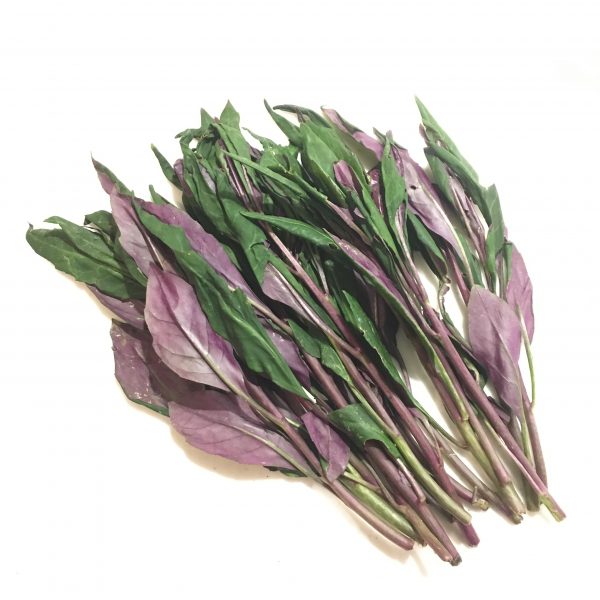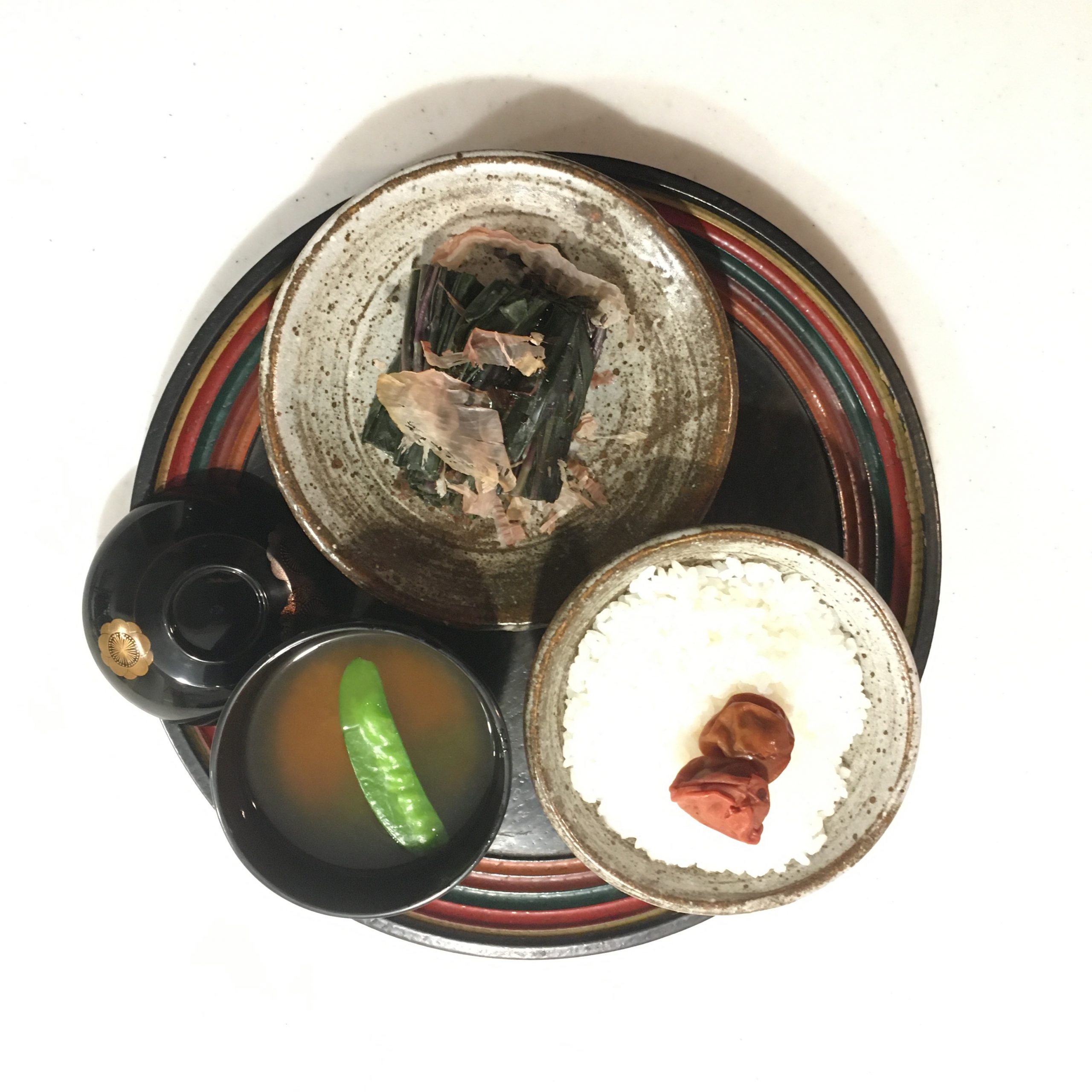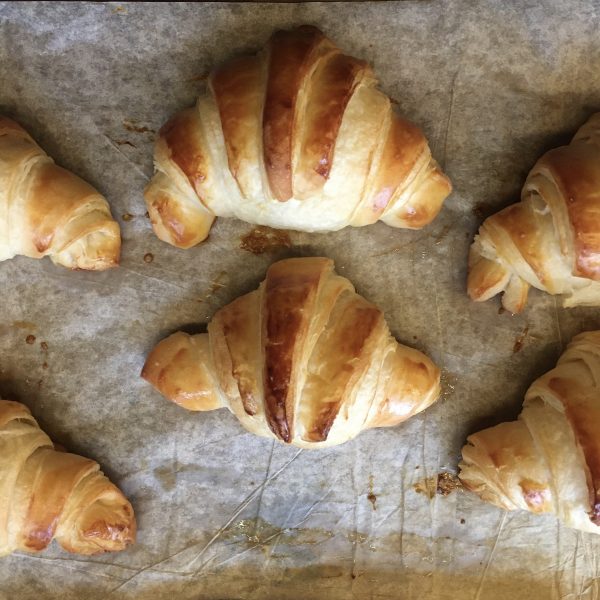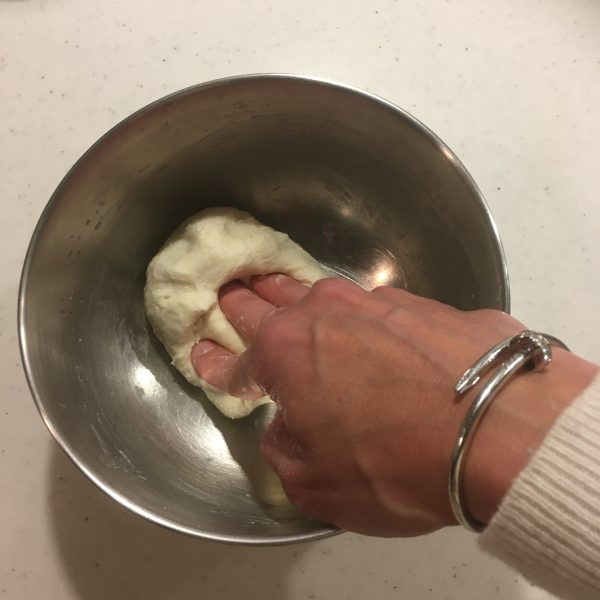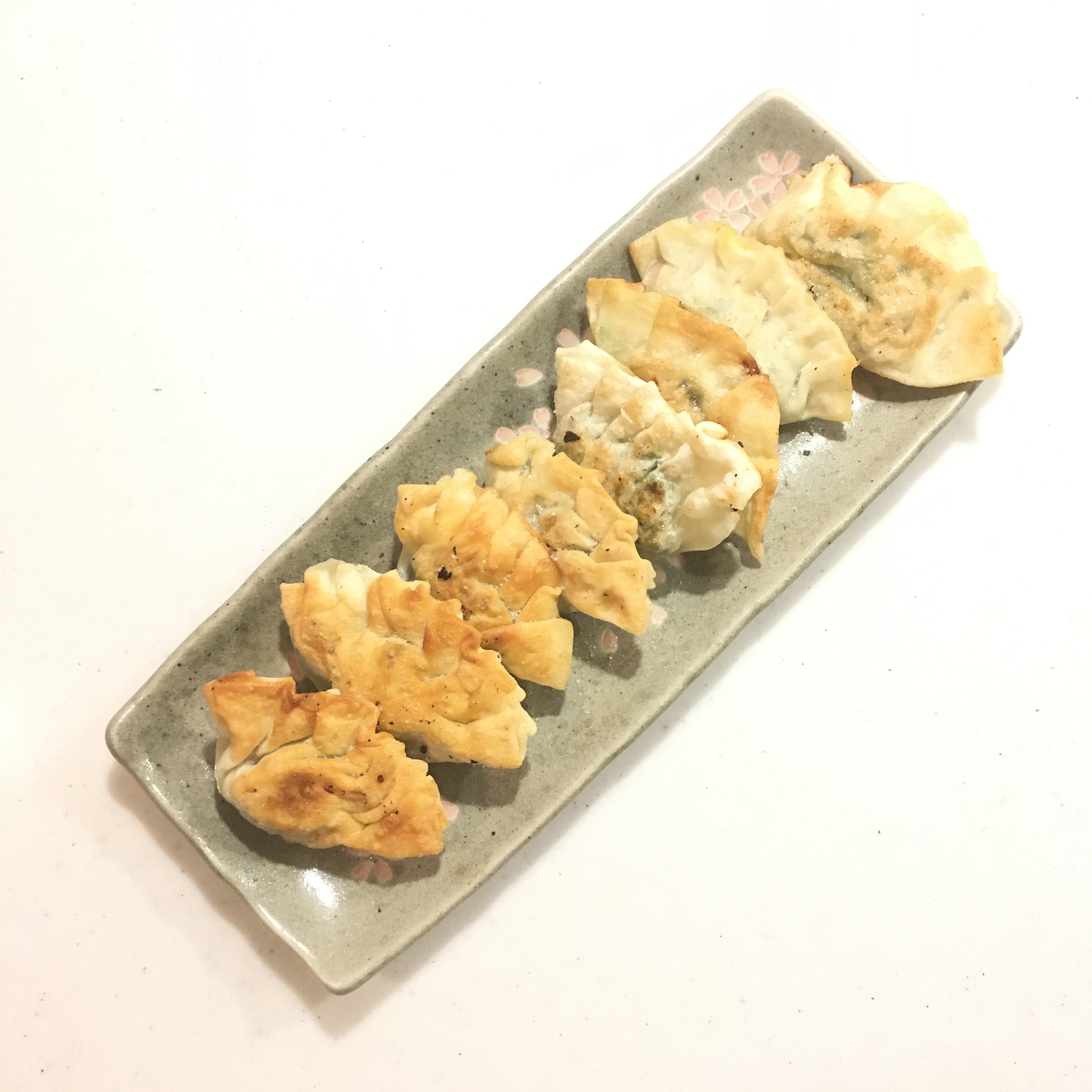For those that have been to Japan they know that potato salad ポテトサラダ is a quite important dish in Japanese cuisine. It is probably one of this japanized version of western food that is so popular it looks like genuine Japanese food!! You can find potato salad on the table at every party and it is so common that it can be found in combini as well. While the idea of a potatoes base salad with vegetables all creamy and mushy is very nice, just like the kabocha salad. But the problem with most potato salad is the abundance of mayonnaise that just makes it fatty and taste like mayonnaise, nothing else. I do like fresh homemade mayonnaise once in a while but I am not such a fan to bother making some in particular if I have no plan for the egg white. But I love homemade potato salad, so I just replace the mayonnaise with a simple soft boiled egg with olive oil. That’s it! It’s faster, more digest and none the less tasty! Because fast is an important condition for preparing lunch when we are back from the ocean.

So here is my potato salad recipe with all ingredients from Isumi except the olive oil from Tuscany and the salt and pepper.
Potato salad (2 servings)
- 3 mid size potatoes that becomes mushy when boiled
- 1 Japanese cucumber
- 5 Japanese sausages
- 1 egg
- 1tbs of olive oil
- Salt and pepper
In a pan boil some water. In the meantime peel and cut the potatoes. Add to the boiling water, add the sausages, and later the egg. Boil until the potatoes are soft. The egg shouldn’t be boiled longer than 5min to keep the yolk creamy. Cut the cucumber in thin slices. Drain the potatoes and the sausages. In a bowl, set the cucumber, the potatoes. Cut the sausages in 1cm long pieces, add to the bowl, stir. The potatoes should start mushing and mix well with all the other ingredients. Add the olive oil, salt and pepper. Finally, add the egg cut roughly. Stir well again. Eat right away or later!
Have a good day!
